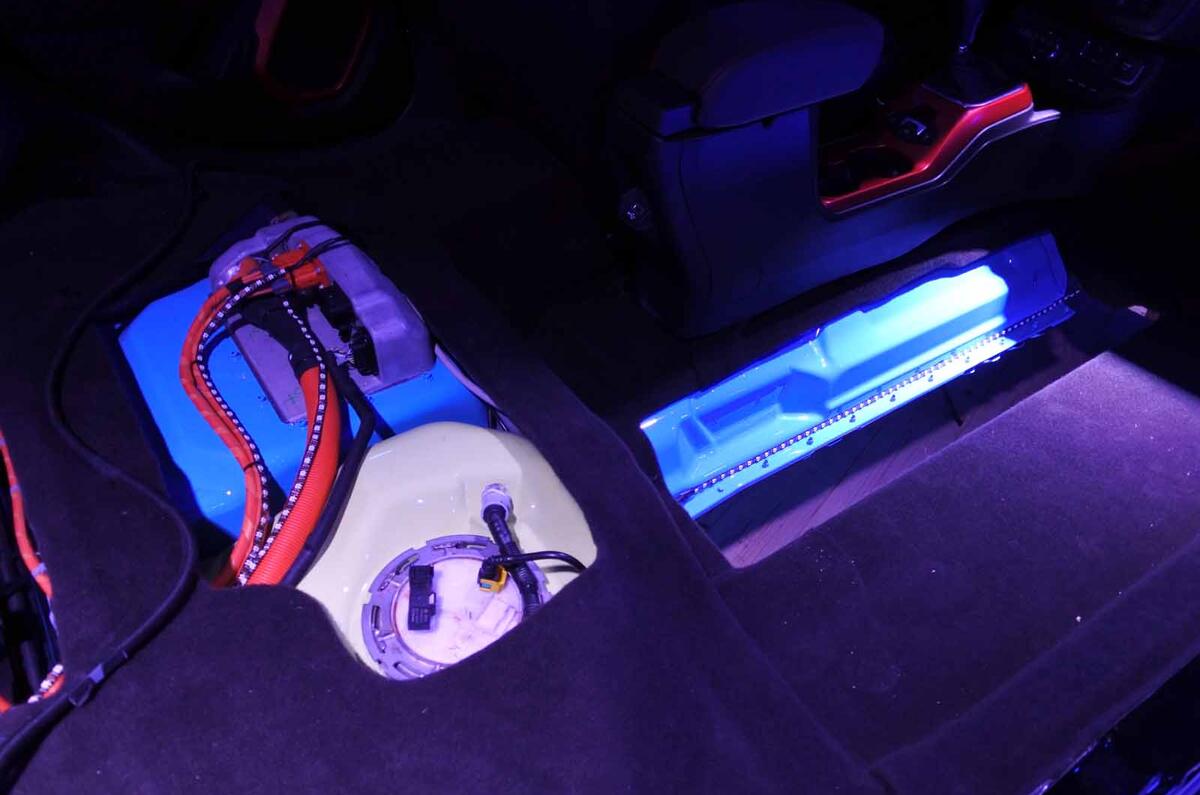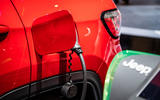Jeep has revealed details of a powerful plug-in hybrid version of the Renegade SUV, set to go on sale in June 2020.
Revealing the Jeep Renegade PHEV in cutaway form, Jeep’s Head of Product Marketing Marco Pigozzi said the company intended for the new model ‘to sell in volume’ and, to that end, the Renegade PHEV would be priced ‘aggressively’.
The new car is substantially based on today’s Renegade, with the most major change being the addition of a 134bhp rear-mounted electric motor, mounted on a modified version of the AWD Renegade’s rear subframe.

The battery - which will be good for an EV range of 31 miles at up to 81mph in ideal conditions - has been mounted in the floorpan’s centre tunnel and also takes up some space under the rear seat. The fuel tank - also under the rear seat - has been squeezed down to a capacity of 39-litres.
Under the bonnet, the 177bhp four-cylinder turbo petrol engine now drives the front wheels through a six-speed automatic ‘box (in place of the standard nine-speed unit). The engine also gains a belt-activated generator, which recharges the battery when the car is braking or coasting.
The car can run in pure EV mode with electric power sent to the rear wheels, in pure petrol mode with drive to the front wheels and as a petrol hybrid with the generator assisting the engine. In all-wheel drive mode, there’s a total of 237bhp shared between all four wheels, allowing it to achieve a 0-62mph time of around seven seconds. It will also be possible to put the battery on ‘hold’ so it can be used when arriving in city centres at the end of a journey.




















Join the debate
Add your comment
Sharing?
I assume this will be thesame set-up that will be used in the Alfa Tonale given that much hurrah was made about a PHEV version of that?
Priced aggressively? I can
Er, no!
Weight has zero effect on high speed economy! Autocar! Learn some basic science!
Weight has an adverse affect economy during acceleration and in a positive way under regenerative deceleration (more energy to recover) Just not at constant speed, other than an infinitesimally small effect on rolling resistance from the tyres.
What interests me about this article is why you can't simply add the power from the ICE engine to that of the electric motor to realise 311 hp.
I get that you can't do that when both motors are working on the same axle, but not in this case.
Robbo
A view from Down Under